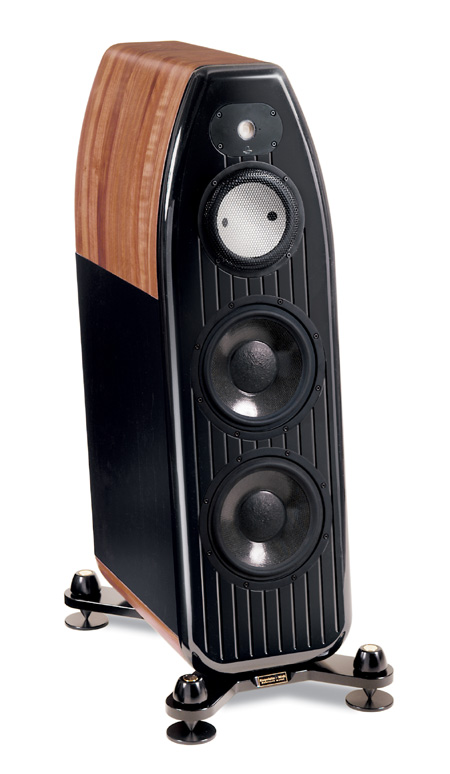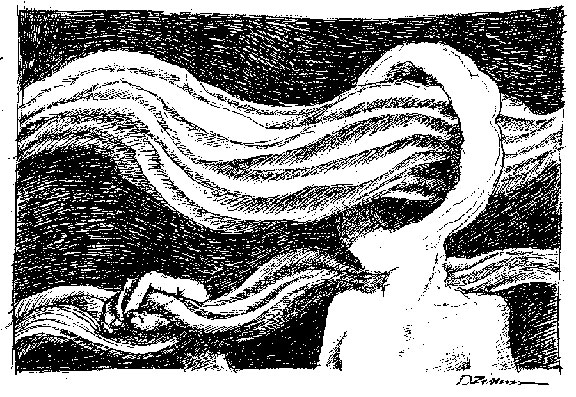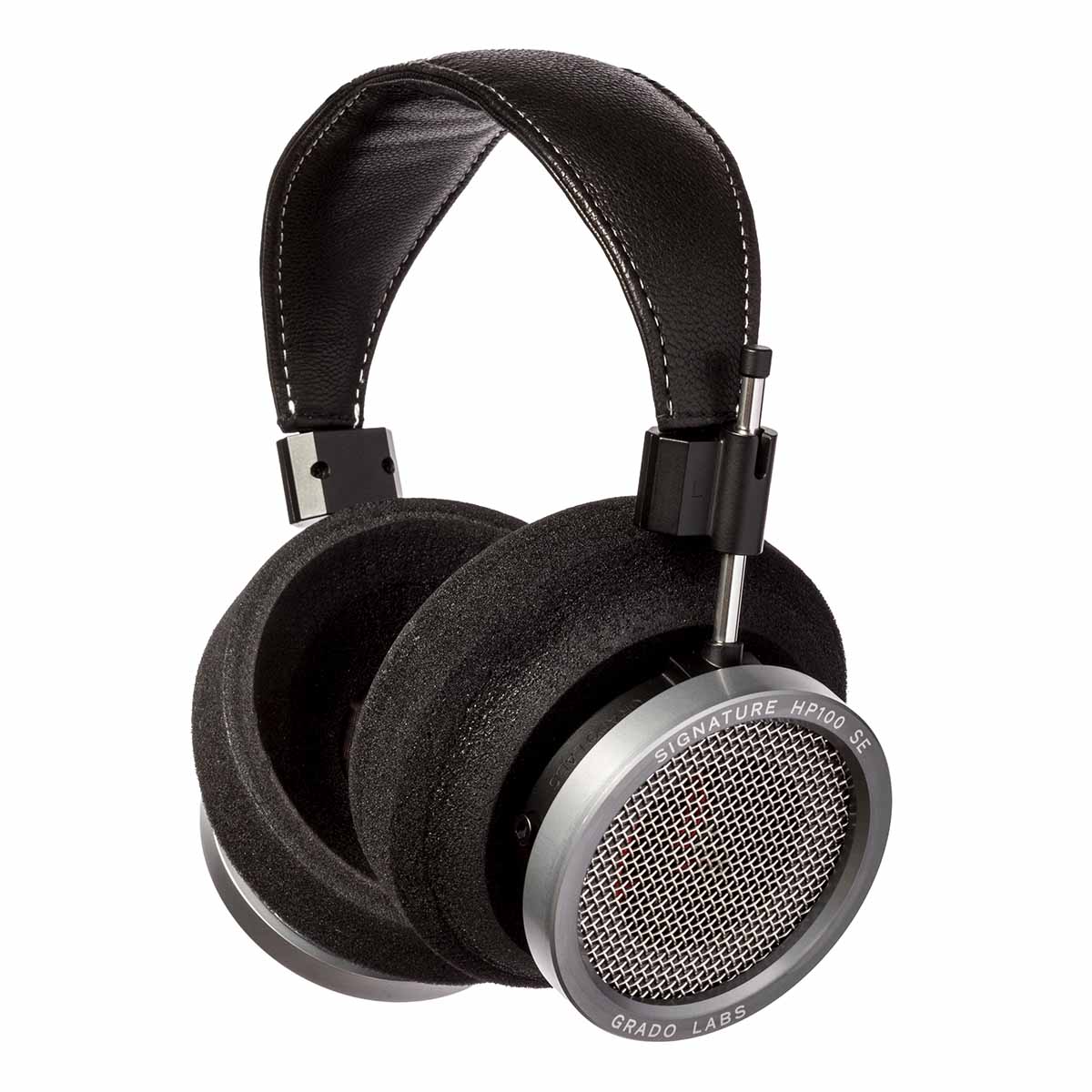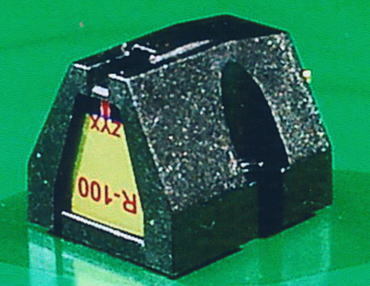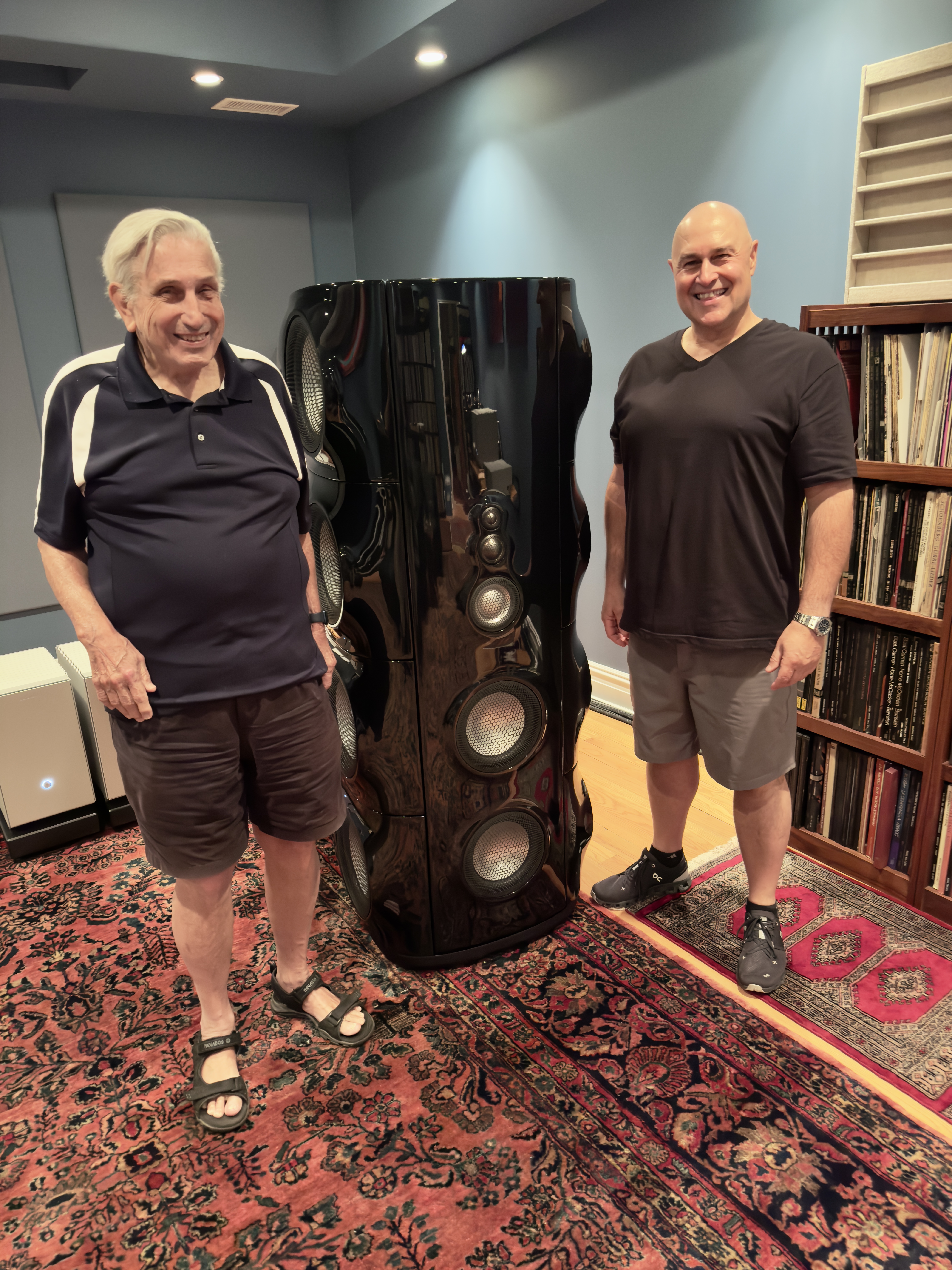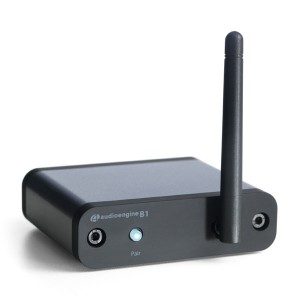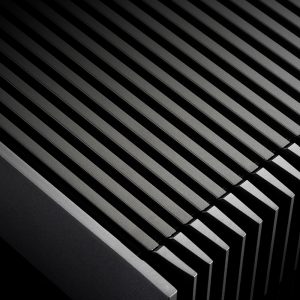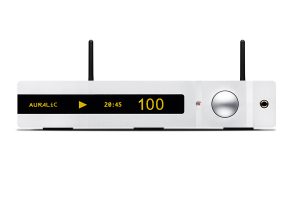Guest review by Mattias Jung of HiFi Statement.
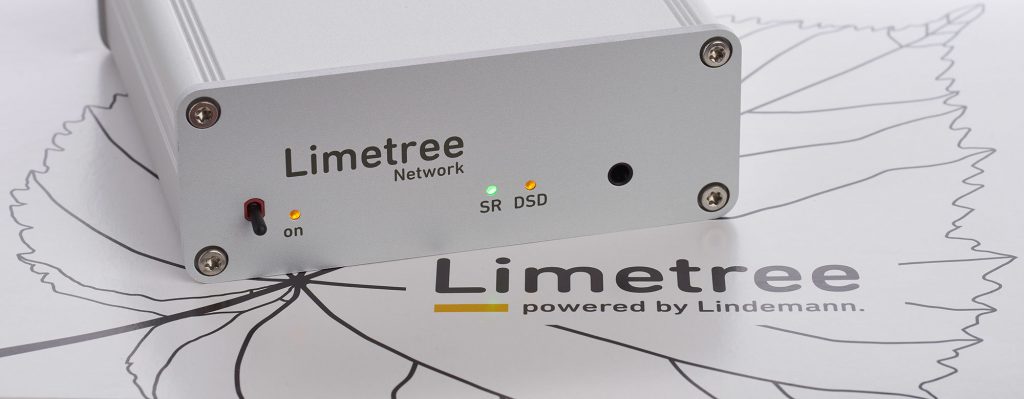
In the past few years I had lost track of the Lindemann company and their audio products. This was despite the fact that I had only the finest memories of the products from Bavaria since the early days, and whenever I passed by a Lindemann demonstration at some trade show, I was greatly impressed. But somehow, we never got together.
One reason for my distance may have been their price policy at that time, and the bulky devices which, admittedly, earned the highest accolades both nationally and internationally, but were a little out of my financial reach. Already since the end of the last millennium they were working on upsampling there, using high-res formats could be played back since 2001 on their own SACD player. This know-how in the digital domain, built up over decades, led to the introduction of the Musicbook series in 2013, which handled the music via network. The enclosures are smaller now, and so are the prices.
Even smaller is their latest incarnation, the brand-new Limetree series by Lindemann. It currently comprises four devices for different applications, and more are in the pipeline. The Limetree Headphone represents a high-quality analog headphone/preamp combo; the Limetree Phono is a phono preamp with discrete inputs for moving coil and moving magnet pickups; the Limetree Bridge is a network player for local storage media and streaming services without a converter; and, the subject of my evaluation here, the Limetree Network, which is basically a Bridge with an on board converter and a preamp. All devices are housed in little aluminum boxes of merely 107 x 40 x 107 mm (4.2" x 1.6" x 4.2") in size.
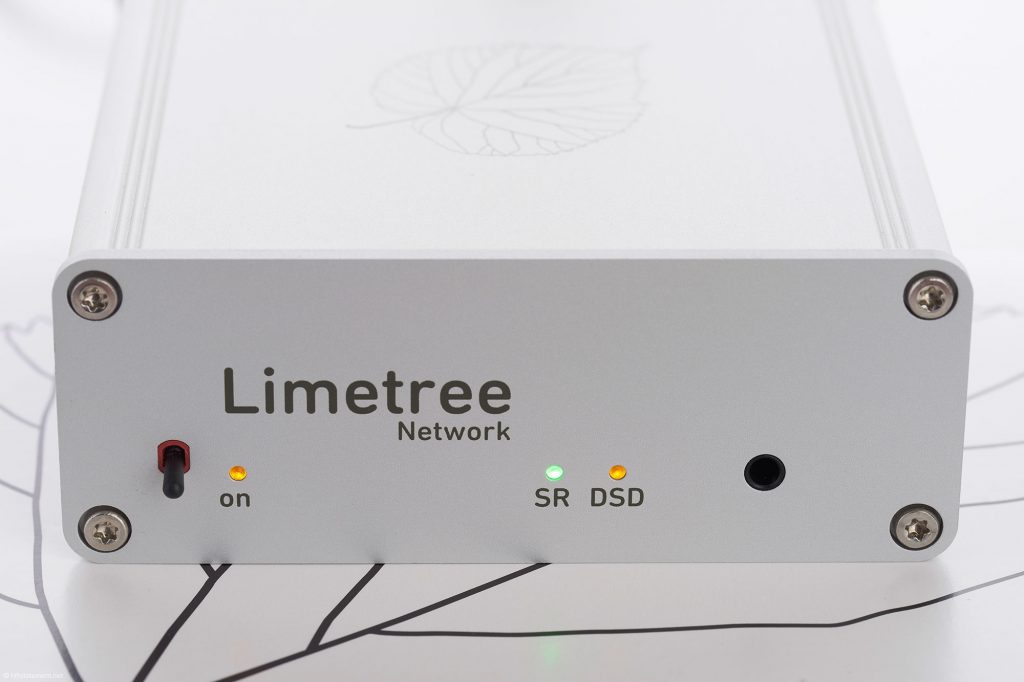
A glance at the front panel will not fully reveal the scope of functions of the streamer/converter. The SR lamp indicates the resolution of the incoming data with a total of 7 colors.
Well, owing to SMD technology, we are now used to see ever smaller and lighter high-quality hifi gear. But still I have to swallow, reminiscing of the massive ancestors, when unpacking the little box with its well-crafted, neatly coined standard aluminum body. One small toggle switch, three LEDs and one ⅛" jack output for a headphone embellish the front, which hardly offers any more free space. The rear panel looks equally tidy: one USB input and a LAN interface are sitting beside an RCA out, a socket for a W-LAN antenna and the power connector, including a little push button to make contact with the wireless home network. But if you take a look inside, the minimalism is soon gone. One AK4452 DAC is used per channel, an AK4137 takes care of the re-sampling, and to keep the jitter permanently low, a MEMS FemtoClock has been installed.
All common music file formats with a maximum resolution of 384 kilohertz for PCM files—via W-Lan "only" 192 kilohertz—or DSD256 respectively are supported (via W-Lan, at least DSD128). The Limetree Network is ready for the most popular streaming providers of high-res music material. Customers can choose between TIDAL, Qobuz, Deezer, HighResAudio, and Spotify, and also have access to countless internet radio stations and podcasts. Of course, one can also access a music server over the network via UPnP and DLNA and locally connect a USB hard disk to play back locally stored music. Owners of a Roon player can use it with the Lindemann Limetree Network. It's "Roon ready" and may be used with Roon Core and Roon software. Oh yes, streaming is also possible via Bluetooth, of course. However, the player should support the A2DP Bluetooth audio transfer protocol. The incoming signals are processed bit-perfect according to the source, a 7-color LED indicates the given resolution in each case. Pressing the on/off switch a little longer will cause the converter to switch into re-sampling mode, which is also indicated by an LED. Now the signals are converted to DSD 256. Compared to PCM, Lindemann attributes a more transparent and more natural sound in this operation mode.
Did I say anything it about being small?
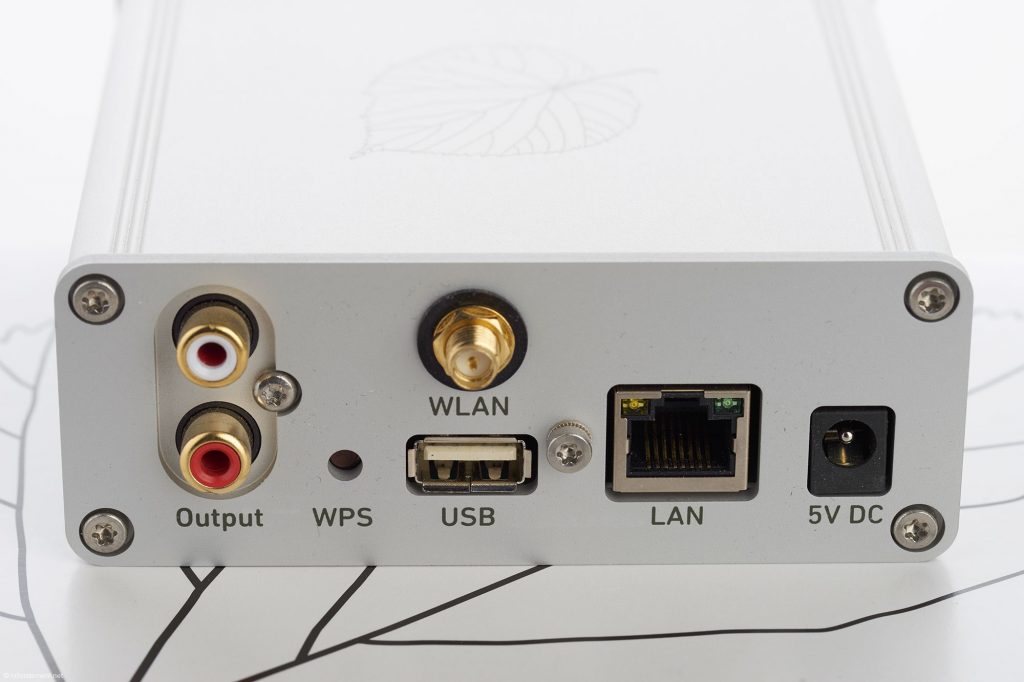
The rear panel of the Lindemann Limetree Network looks rather tidy. Nevertheless, the device offers a remarkable range of functions.
In order to benefit from all these features, the Lindemann app must first be installed on a smartphone or a tablet. It's available at Google Play for Android or at the App Store for iOS. For all users of a Google-free smartphone with Android, the web also offers sources with the APK file, which can be installed and used at one's own risk.
After the easy installation the Limetree Network is ready to be accessed. However, I could make it work only after several attempts. But once the connection has been established, it's reliable and could only be thwarted by fluctuations in your personal W-Lan. But the software can't be blamed for this. The Lindemann app is pleasantly calm and, luckily, not too colorful and easy to use. The respective providers of streaming, internet radio or hard disk are quickly selected; for the services you can enter various search parameters, and thus narrow the results accordingly. This is really simple and intuitive to do and, in almost all cases, will lead to the desired results.
At my place, Qobuz and TIDAL are available as streaming providers for high-res material, and also Spotify in its basic version, so I can check out the functions extensively. One word about the supply: it's true that the providers promise us that we may confidently sell off our CD collection at the flea market since everything is available online. But this isn't quite true. Some of the—what I would call "side repertoire"—is not listed. A lot of notably older pop productions, often exist only in remastered versions, and sometimes you just want to have the original. But nine times out of ten you will have bought such things anyway and, as the case may be, they may be ripped onto hard disk; then network streaming will work for you. And the old LPs should be kept anyway; there are indeed quite a few gaps. But that's not our point here. Rather it's great fun to get inspired in your search by the app recommending similar artists and then simply take another road for a change. You will certainly discover new and unknown music here and there.
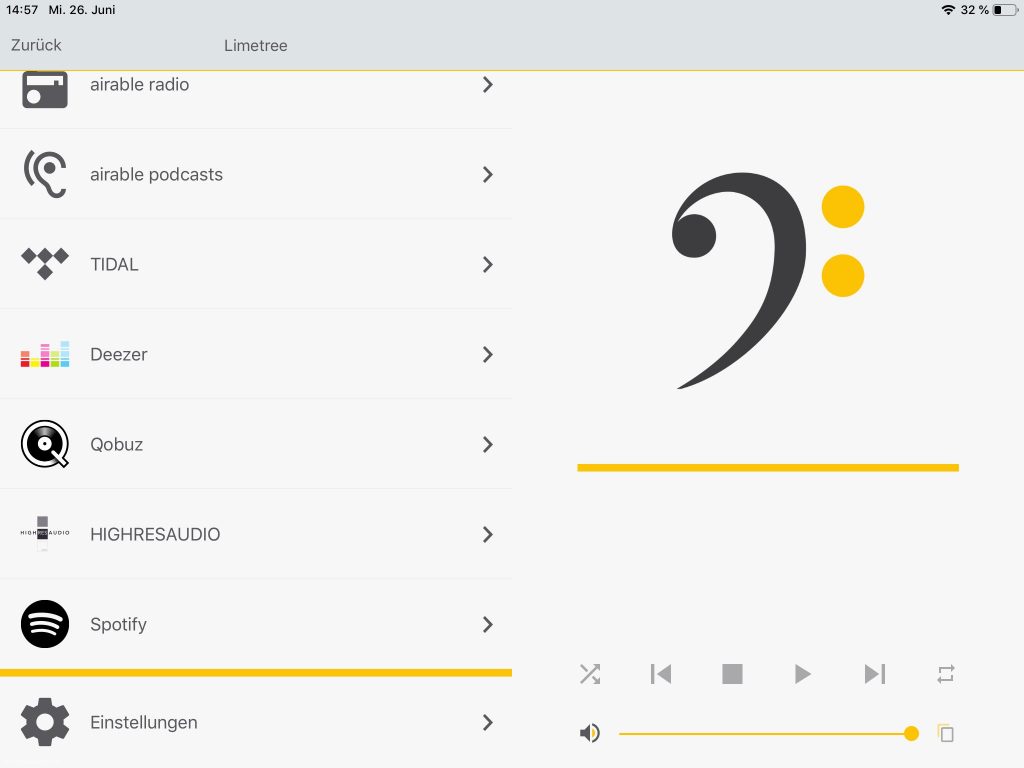
The main menu of the Lindemann app allows the user to select from different sources.
Unavailable in good time for a test, a new firmware version is out now, which enables one to address a CD drive via USB. This is very practical for those who want to continue using physical data carriers also in the future. After several attempts I was using the Lindemann Limetree Network as a streamer/converter. As a mere preamp it sometimes didn't deliver enough output level in my chain. On the other hand, the Lindemann is an excellent partner for connecting high-class active loudspeakers with adjustable input sensitivity. In the first round, just to get an idea of the Limetree Network's character, I was playing from hard disk without re-sampling, competing against a CD player through the Audioquest Beetle with the same material. In spite of its drier bass, the—in absolute terms—very good Audioquest had to admit defeat here.

A targeted search can be refined at will within the app.
Showing more substance, enhanced clarity, and a great deal of inner coherence, the Lindemann is quick to reveal its higher ambitions. With the re-sampling function activated, the difference becomes even more obvious. Older recordings now have flow, and homogeneity as well. Brilliance, structure in the bass, and a transparent room imaging round off the soundscape. The reproduction gets—it's hard to describe—richer.
However, with some recordings, which have accompanied me for many years, it's over the top for my taste, and I prefer the harder and edgier sound of the original resolution. Maybe it's just the long habit? In my view, the better the recording and production quality of the source material, the less re-sampling is needed. Since with the average listener this doesn't apply to the vast part of the music collection, I simply leave the re-sampling mode permanently on; the advantages prevail with 90 per cent of the music.
Well, how does the little Lindemann sound? It's not easy to pick an individual audio virtue. It's very complete, big, colorful, and, as already mentioned above, homogeneous on a truly high level. But there is more: an immense tidiness which has nothing to do with clinical purity. Despite the complete absence of artifacts and grain, the Network sounds never cold or hard. Au contraire, there's always a dash of warmth in it while offering a palpable flow and substantial smoothness.
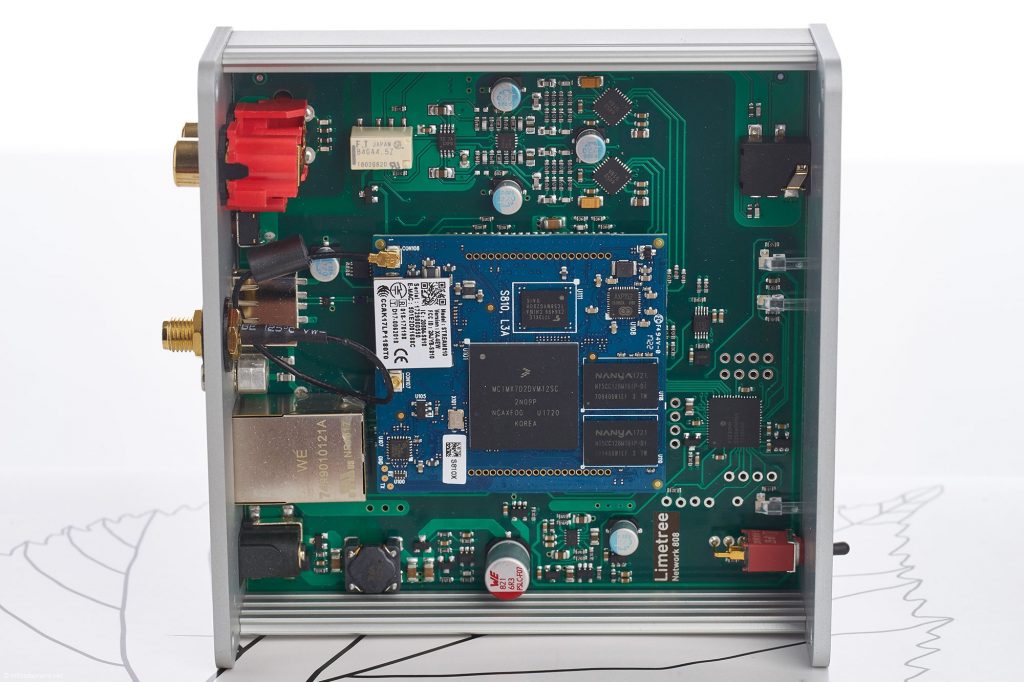
The power supply comes from the medical sector and is specifically tuned to the Limetree, which is why it shouldn't be replaced carelessly for something else. The extra onboard filtering ensures a particularly low interference.
On async remodels, an album where Ruichi Sakamoto personally produced the interpretations of his album async by other artists, "life, life" by Andy Stott features an absurd initial bass gong that reverberates forth in space, lots of different subsonic tones, and a kaleidoscope of reverberating synthesizer layers, which effortlessly bridge the gap between the true acoustical room and the virtual one. Though everything is totally synthetic, the Lindemann manages to not only give power and punch to the deep initial strike, but also to model the reverb tail in a wonderful manner without detaching it from its origin or leaving it wavering in the empty space. It's a little more on the voluminous side, without brutality, yet with full emphasis and a tad bit more volume than structure. Actually, the entire bass range already becomes manifest here: very deep, structured and yet lush, also nicely balanced between volume and resolution and with just the right amount of impact. "Organic," this word comes to my mind, so real does the inherently synthetic bass figure sound. Certainly intended by the artist, but it takes quite a bit for a component to perform in such a convincing manner!
By the way: I need to admit that, due to the cornucopia of choices, I was in fact listening randomly, and now I can't remember too many names of outstanding examples. The search for high-resolution material was good fun. Including songs by Schubert, recorded at 24-bit/96 kilohertz. On the first album a pinpoint imaging in a very large room, a precisely contoured piano with an extremely transparent body, in front of it the vibrant singer whose voice is unraveled in all facets. Beauty that makes you want to get down on your knees. This is high-res, I was thinking by myself. On the second album a piano, the room slightly diffuse, the voice a little reserved. Pretty well known and normal. Also with high-res after all, it really matters who's sitting at the controls.
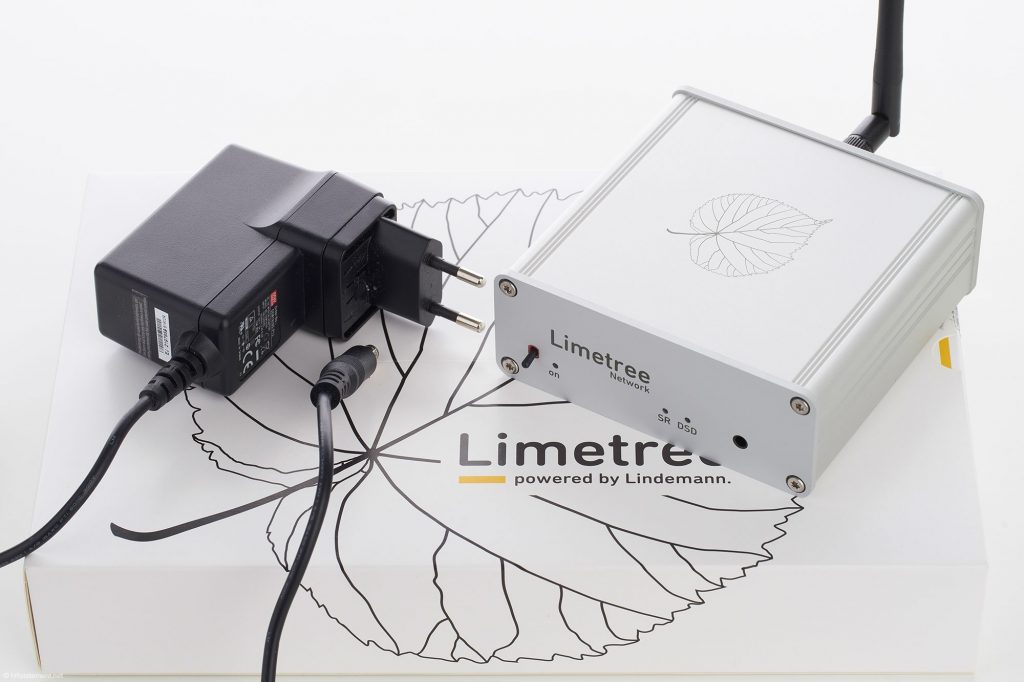
Ridiculed not so long ago, the miniaturization using SMD technology points the way into the future. Such performance out of such a small unit can hardly be reconciled with popular notions.
And what about the Lindemann? It gets across everything just the way as it has been taken from the web. In spite of all neutrality, it's also fully present in the treble range and accomplishes the feat of never getting on your nerves, but without smoothening top-end sparkle on the other hand. Here it benefits from a pronounced talent for fine dynamic structures. But also, in the field of coarse dynamics, the Limetree nails its colors to the mast. It falls already in a category of devices which do not just make the tympani and trumpets sound louder with an orchestra tutti, but release some serious energy and punch into the generous, very stable room. In doing so it foregoes the analytical quirk of numerous components, which build up an additional blackness around the instrument groups; it rather allows the music to decay or interweave in these rooms.
I nearly forgot the headphone output, which can supply a high level of sound. However, with very high-Z headphones, one will eventually hit upon a limitation in volume. After all, the Lindemann gave me such a good time that I'm considering getting one for myself, too. It sounds great, eats no space and can do so much.
From now on I will definitely never again lose sight of Lindemann.
STATEMENT
The Limetree Network by Lindemann is not just a universal digital control center which hardly leaves anything to be desired—it also sounds almost shockingly mature, especially for its price tag. Things can barely get better, not even in very heavy boxes.
TEST EQUIPMENT
- CD drives: Denon DCD-1290, Technics SL-P471A
- Converters: Phonosophie DAC1, Audioquest Beetle
- Amplifiers: Creek 5350 SE, Thorhauge ST.ONE, Rotel RB-980BX
- Loudspeakers: PMC Twenty5 .22, Buchardt-Audio S400
- Cables: RG142, Wireworld, Funk-Tonstudiotechnik, Supra Cable, Audioquest
Specifications
General
- Power consumption: 0.1 W standby, 3.5 W operation, 11 W max.
- Dimensions (W x H x D): 107 x 40 x 107 mm (4.2 x 1.6 x 4.2 in)
- Weight: 300 g (0.66 lbs)
- Power supply: 5V DC
D/A converter
- Resolution: 384 kHz/32-bit and DSD 256
- Dynamic range: > 120 dB
- THD & Noise: < 0.001 % (@ 0 dB FS)
- Clock: ultra low jitter MEMS FemtoClock
- Re-sampling: bit-perfect or DSD
- Converter architecture: two AK4452 DACs in dual differential mono mode, AK4137 re-sampler
- Output voltage: 2.0 V @ 0 dB FS
- Output impedance line output: 100 ohms
- Headphone connector: 3.5 mm mini jack socket
- Recommended headphone impedance: 32 -200 ohms
Network player
- Ethernet: 100 Mbit/s
- WLAN: dual-band 802.11a/b/g/n/ac
- Bluetooth 4.2, A2DP
- USB 2.0 high-speed host interface, max. output current 1.5 A
- Supported codecs: WAV, FLAC, AIFF, ALAC, MP3, AAC, Ogg Vorbis, WMA, DSD
- UPnP und DLNA support
- PCM resolution: 44.1 kHz up to 384 kHz, 24 bit.
- DSD resolution: DSD 64 up to DSD 256.
- Gapless playback
- Streaming services: TIDAL, Qobuz, Deezer, HighResAudio, Spotify, Internet radio and Podcast
- Roon Ready
Limetree Network
Retail: €895 (~$1005)
Lindemann audiotechnik GmbH
Am Anger 4
82237 Wörthsee
GERMANY
+49 8153 9533390
www.facebook.com/lindemann.audiotechnik
Photographs by Mattias Jung




